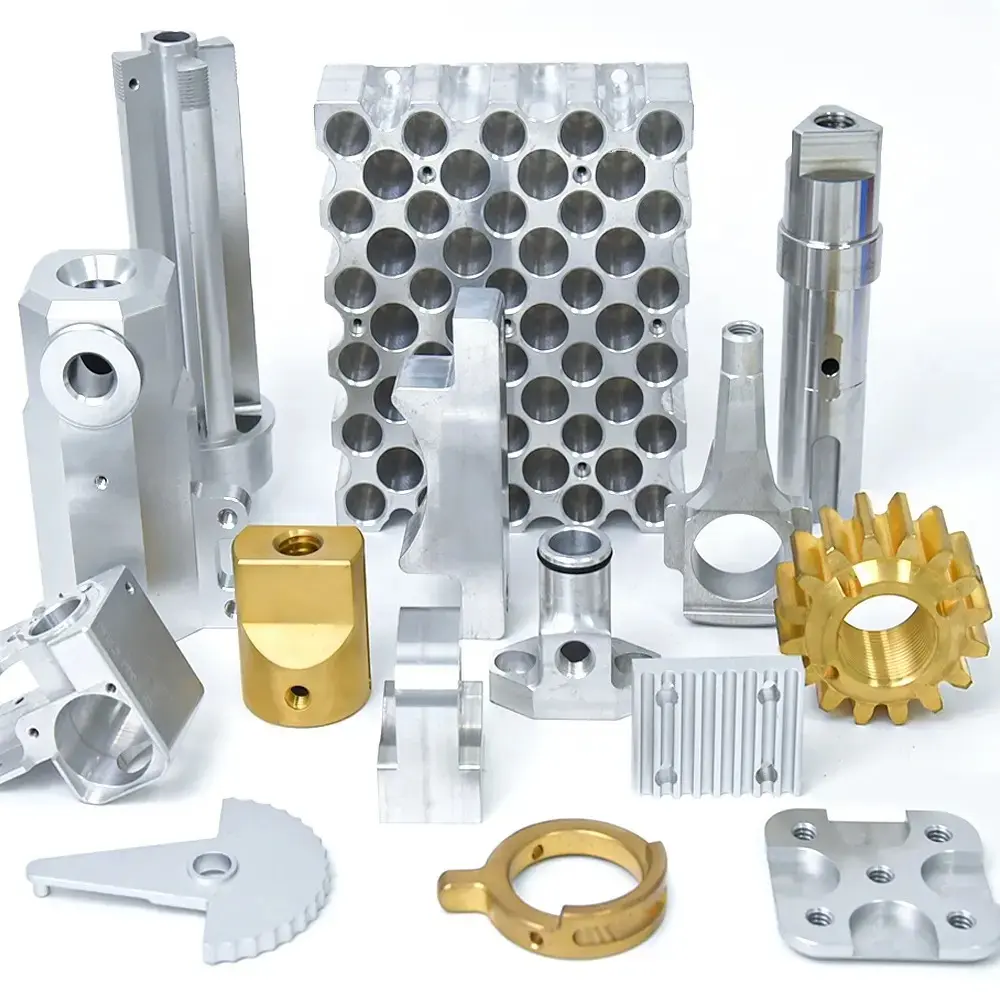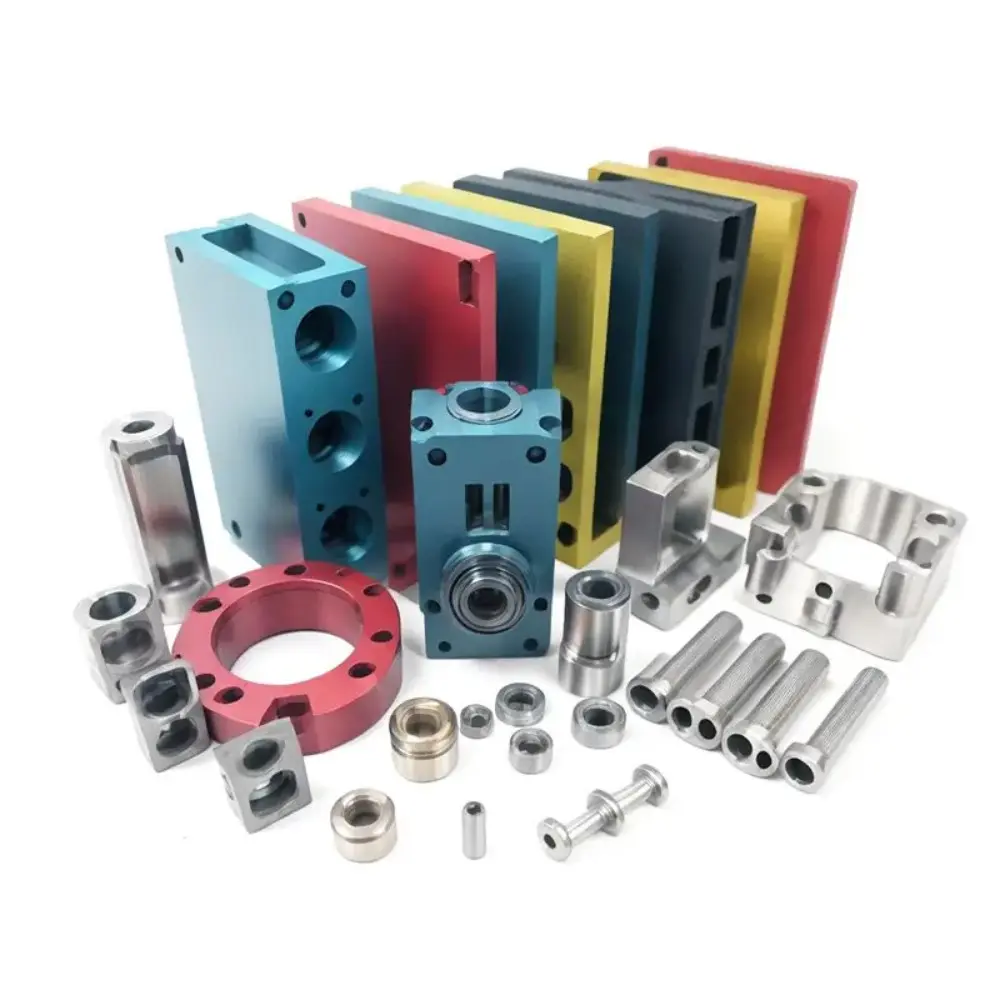Introduction to 5 Axis CNC Machining Engine Block Manufacturing
The engine block is the structural and functional core of any internal combustion engine. Responsible for housing essential components like pistons, cylinders, crankshafts, and coolant passages, its dimensional precision is critical to achieving high engine efficiency, power output, and long-term durability. As the demands on engine performance continue to rise across automotive, aerospace, and marine sectors, advanced manufacturing solutions like 5-axis CNC machining have become indispensable. This technology allows for complex, multi-surface machining operations in fewer setups, delivering superior precision, reduced lead times, and consistent quality.
Why 5-Axis CNC Machining for Engine Blocks?
1. Complex Geometries in a Single Setup
Modern engine blocks include a variety of intricate features—angled oil galleries, deep coolant channels, cylinder bores, and precision mounting surfaces. 5-axis CNC machining enables these multi-directional features to be milled without part repositioning, eliminating misalignment and drastically improving machining consistency.
2. Achieving Tight Tolerances
Precision is paramount in engine block manufacturing. With 5-axis CNC machines, manufacturers can maintain:
- Cylinder bore concentricity within ±0.007 mm
- Deck surface flatness under ±0.01 mm
- Bore roundness for optimized piston fit and minimal friction loss
3. Superior Material Compatibility
Whether machining compacted graphite iron (CGI), A356-T6 aluminum alloy, or cast iron, 5-axis machines adapt seamlessly with the right tooling and speeds, ensuring efficient chip evacuation, thermal management, and minimal tool wear.
4. Enhanced Operational Efficiency
By reducing manual setups and consolidating operations, 5-axis machining:
- Cuts setup time by over 60%
- Minimizes human error
- Improves production repeatability for batch runs
5-Axis CNC Machining Process for Engine Blocks
1. Material Preparation
Engine blocks are typically cast or forged. Prior to machining, parts undergo stress relieving (especially aluminum alloys) to eliminate residual internal stresses that could cause warping during cutting.
2. High-Efficiency Roughing
Roughing operations use High Efficiency Milling (HEM) with robust carbide tools coated with TiAlN or AlCrN. These tools withstand extreme heat and abrasive forces while quickly removing bulk material.
3. Semi-Finishing & Finishing
Critical features such as:
- Cylinder liners
- Crankshaft journals
- Camshaft tunnels are machined using 5-axis simultaneous movements. Surface finishes between Ra 0.8 to 1.6 µm are achieved using fine-grit end mills and diamond tools.
4. Drilling & Tapping
Precision holes are created for:
- Cylinder head bolts
- Oil passageways
- Temperature and pressure sensors Indexable drills and rigid tapping cycles ensure straightness, thread quality, and dimensional accuracy.
5. Post-Machining Treatments
- Heat Treatment: Aluminum blocks often undergo T6 aging to improve mechanical strength.
- Surface Coatings: Electroless nickel plating and thermal spray coatings boost corrosion and wear resistance.
Technical Challenges & Engineering Solutions
| Challenge | 5-Axis CNC Solution |
|---|---|
| Internal coolant/oil channels | Long-reach tooling with through-spindle coolant to maintain bore integrity |
| Thermal distortion in Al alloys | Adaptive toolpaths and minimal step-over strategies to dissipate localized heat |
| Precision bore finishing | Use of single-point diamond boring tools for <Ra 0.4 µm finish |
Case Study: Lightweight Motorsport Engine Block
Client: European performance engine builder for track racing.
Requirements:
- Material: A356-T6 aluminum alloy
- Cylinder bore tolerance: ±0.007 mm
- Production Volume: 10 units
- Turnaround Time: 15 days
Great Light CNC’s Approach:
- Machine: DMG Mori NHX 6300 with 5-axis capability
- Programming: Adaptive high-speed toolpaths via Mastercam
- Inspection: CMM verification and inline probing
Results:
- Cycle time reduction of 25% compared to traditional 3-axis methods
- Concentricity deviations < 0.005 mm
- Weight reduction of 20% over cast iron versions
- Delivery completed 3 days ahead of schedule
What are the types of Engine Blocks?
1. Types of Engine Blocks
- Inline (Straight) Blocks
- Cylinders arranged in a single row.
- Common in 4‑ and 6‑cylinder automotive engines.
- Pros: Simple casting and machining; good packaging for transverse installations.
- Cons: Can be long, limiting engine bay packaging in larger cylinder counts.
- V‑Type Blocks
- Two banks of cylinders set at an angle (typically 60°–90°).
- Found in V6, V8, V10, V12 engines.
- Pros: Compact lengthwise; smooth balance in certain bank angles.
- Cons: More complex castings; additional machining for the “V” valley.
- Flat (Boxer) Blocks
- Opposed cylinders lie horizontally in two banks at 180°.
- Used by Subaru, Porsche, some aircraft engines.
- Pros: Very low center of gravity; excellent balance.
- Cons: Wide footprint; complex oil‑ and coolant‑routing.
- W‑Type Blocks
- Essentially two narrow‑angle V engines joined on a common crankcase.
- Seen in high‑end performance engines (e.g., some VW/Audi W12s).
- Pros: Very compact for cylinder count; high power density.
- Cons: Extremely complex casting and machining.
- Other Configurations
- Rotary/Hankel engines don’t use a traditional “block” but still require precision housings.
- Electric motor housings share many casting and machining principles but aren’t ICE blocks.
2. Core Components of an Engine Block
An engine block isn’t just a chunk of metal—it integrates multiple functional features:
- Cylinder Bores & Sleeves
The precision‑machined bores guide pistons; sometimes replaceable iron sleeves are inserted into an aluminum block. - Crankcase & Main Bearing Saddles
Houses the crankshaft; includes machined “saddles” for main bearings and often removable bearing caps. - Deck Surface
The flat top where the cylinder head bolts on; must be extremely flat and parallel to the crankshaft axis. - Camshaft Housing (for OHV/OHC)
Channels or tunnels cast/machined for camshafts, lifters, and timing-chain/belt guides. - Oil Galleries & Passages
Drilled or cast channels that distribute lubrication from the oil pump to bearings, camshafts, and galleries. - Coolant Jackets & Passages
Internal cavities around the bores to circulate coolant and manage thermal loads. - Freeze (Core) Plugs
Removable plugs that seal casting cores and provide a safety “blow‑out” point if coolant freezes. - Accessory Mounting Bosses
Machined pads and threaded holes for alternators, pumps, brackets, and sensors.
3. Common Materials for Engine Blocks
| Material | Advantages | Typical Uses |
|---|---|---|
| Gray Cast Iron | Excellent damping, wear resistance, low cost | Economy cars, trucks |
| Ductile (Nodular) Iron | Higher tensile strength, fatigue resistance | Performance and diesel engines |
| Compacted Graphite Iron | Combines stiffness of cast iron with weight savings | Modern diesels (Euro 6+) |
| Aluminum Alloys | Light weight, good thermal conductivity | High‑efficiency petrol engines |
| Magnesium Alloys | Ultra‑light (rare, expensive, corrosion concerns) | Racing, aerospace prototypes |
| Composite/Hybrid | Metal–matrix composites for extreme weight savings | Cutting‑edge research engines |
4. Precision & Tolerancing Requirements
Modern engine blocks demand micron‑level accuracy to ensure performance, durability, and low NVH (noise‑vibration‑harshness):
| Feature | Tolerance | Surface Finish |
|---|---|---|
| Cylinder Bore Diameter | ±0.005–0.01 mm | Ra 0.4–0.8 µm (after honing) |
| Bore Roundness & Taper | ≤ 0.005 mm total indicator runout (TIR) | |
| Deck Flatness & Parallelism | ≤ 0.02 mm | Ra 1.6 µm |
| Main Bearing Bore Alignment | ≤ 0.01 mm coaxiality | |
| Bolt Hole Thread Accuracy | ISO 6H/6g for M8–M12 fasteners | |
| Oil & Coolant Passage Bores | ±0.02 mm | Ra 3.2 µm |
| Accessory Boss Machining | ±0.05 mm | Ra 3.2 µm |
Note: Tolerances vary by engine size, performance target, and material. High‑performance and racing engines often push tolerances even tighter, while mass‑production engines may allow slightly looser fits to optimize cycle time and cost.
CNC & Post‑Processing Operations
- Rough Machining (3‑ to 5‑axis CNC)
– Removes bulk material; leaves ~0.5–1 mm for finish passes. - Finish Milling & Boring
– Achieves final dimensions on decks, bores, and mounting faces. - Honing & Lapping
– Fine‑finishes cylinder bores to achieve roundness and surface texture. - EDM (Wire/Cavity)
– Used for complex internal galleries, core plugs, or extremely hard materials. - Surface Treatments
– Shot‑peening, plasma spray, or DLC coatings for wear resistance and fatigue life.
In summary, selecting the right block type, material, and machining process—and holding to tight tolerances—is critical to building engines that deliver power, efficiency, and longevity. Whether you’re prototyping a bespoke V12 or machining high‑volume inline‑4s, understanding these fundamentals will guide every stage of design and production.
Why Choose Great Light for Engine Block Machining?
1. State-of-the-Art Equipment
- 5-axis vertical and horizontal machining centers (Haas UMC-750, DMG Mori NHX series)
- In-process probing systems for dimensional control
2. Material Mastery
- Aluminum, cast iron, compacted graphite iron, and high-silicon alloys
- In-house consultation on metallurgy, heat treatment, and performance coatings
3. Robust Quality Control
- ISO 9001 certified
- 100% dimensional verification using CMMs, surface finish testers, and laser measurement
4. Complete Turnkey Services
- CAD/CAM programming assistance
- Functional prototype machining within 7–10 days
- Surface finishing: anodizing, Teflon/PTFE coatings, honing, and deburring
Industry Applications
Automotive
- Engine blocks for passenger cars, heavy-duty trucks, performance and racing applications
Aerospace
- Lightweight blocks for UAV and small aircraft powerplants
Marine
- Saltwater-resistant alloys for boat and outboard engines
Conclusion: The Future of Engine Block Manufacturing
With increasing demands for engine efficiency, emission control, and lightweighting, 5 Axis CNC Machining Engine Block solutions represent the pinnacle of precision manufacturing. Great Light CNC offers unmatched expertise in machining high-performance engine blocks across materials, tolerances, and industries.
Whether you need a single prototype or a batch of production-grade blocks, our combination of cutting-edge machinery, expert engineering, and strict quality control ensures excellence at every step.
Customize Your Engine Block Today: ✅ Upload your CAD drawings for a free DFM (Design for Manufacturability) review
✅ Get fast and reliable shipping through our global logistics partners
👉 Request a Quote to start your project with Great Light—your partner in precision machining.






